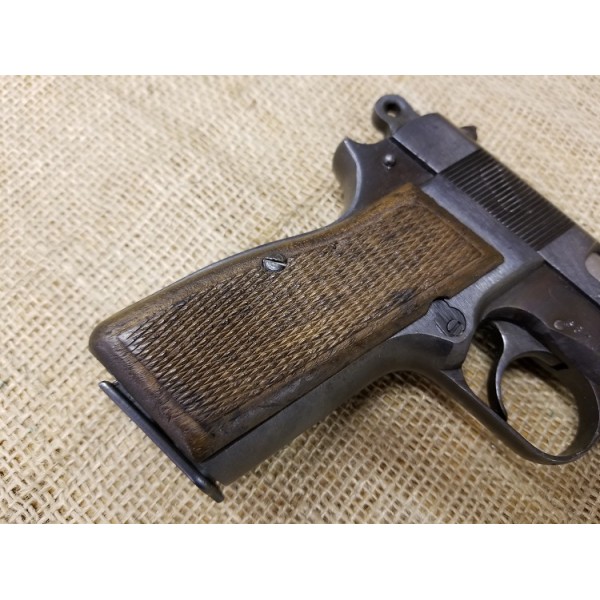

If the right grip has the S/N penciled on the underside.” Worn checkered walnut with the gold (brass) S&W indented logo. The cylinder was probably replaced long ago by Bapty. “All numbers on steel match the S/N 39871 except the cylinder, which means The barrel left side printing says "SMITH & WESSON

Patent text on the top side of the barrel is

The barrel centerline and on the right side of the frame, the S&W "Trade The barrel in a vise, and at the flare where the cylinder pin hits theĪlso of note is a crossed flag British proof on the frame left side at “The overall finish is worn with rust specs with "dings", orĭents, on either side of the barrel near the frame, probably from placing 455 blanks, availableįront sight, custom made from steel stock, measures 9mm (.355 inches) high,Ħmm (.236 inches) wide and 2.8 cm (1.10 inches) long. Re-blued “to cover the barrel work.” The gun used. One of the English WWI contract guns in the s/n range 5001 to 74755 and Through photographic analysis, it was learned that the "Bapty" is When the gun was photographed after auction, it was learned that the pistol Walls, so Bapty cutting and installing a later barrel would explain the That the later S&W 1950 Army and Model 22 (through 1966) had thinner “A S&W 1917 muzzle wall thickness measures about. There were no HE2s made with 4-inch barrels. The barrel on the “Bapty” is likely a later barrel added to the gun as Thanks to careful research by “Indy45,” who will be quoted in the followingĭescriptions, much is now known about the "Bapty," including 455 Eley caliber as becauseĮxposed brass cannot be seen at the back of the revolver's cylinder during The “Bapty” was a Hand Ejector 2nd Model with lanyard ring andĪ 4-inch barrel with a “Baughman-style” front ramp sight and worn bluedįinish. Smith and Wesson Hand Ejector 2nd Model “Bapty” On these now-historically important revolvers. This can most likely be attributed to an oversight in production.īoth of these pistols were sold at separate auctions a few years ago andĪre now in private hands, with both owners kind enough to provide details A variant in the two Raiders hand ejectors was the S&W gold A distinguishingįeature in recognizing one of these type guns is the slim profile checkered It is widely accepted that theīapty was used in all the revolver shooting scenes.īoth guns had their barrels cut down to four inches. The second was a Smith & Wesson Hand Ejector ModelĢ (HE2) from Bapty & Co. One wasĪ Smith & Wesson 1917, chambered for. There were two primary revolvers used in Raiders of the Lost Ark. They were popular with the military in the late 1800s, earlyġ900s, because they could be quickly emptied and reloaded. The "hand ejector" may be considered the first "modern" style

Smith and Wesson became famous for making revolvers in the 1800s, and Units throughout the world and remained the sidearms of choice for policeįorces throughout the world well into the 1980s. Until World War II, revolvers were the mainstay sidearm in most military The use of the revolver hearkens back to the Western heroes and theirĬolt peacemakers, a genre that helped inspire the Indiana Jones series. Indiana Jones is most often identified with the revolver.
#LATE NAZI HI POWER SERIAL NUMBERS SERIES#
The guns Indiana Jones uses in the course of the film series vary fromįilm to film, and in the case of Raiders, sometimes scene to scene, butĮvery pistol Indiana Jones uses is indicative of the post-World War I era.Īll of his sidearms are early-1900s military designs and although thereĪre a few choice moments in Raiders of the Lost Ark where he uses a semi-automatic,


 0 kommentar(er)
0 kommentar(er)
